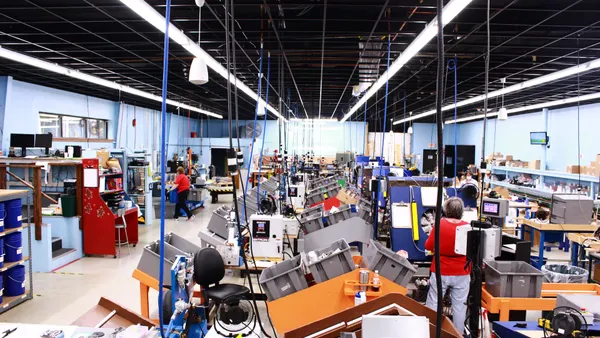Dive Brief:
-
A great majority (85%) of Americans use coupons: 24% “often,” 29% “sometimes,” and 32% occasionally. Some 63% of U.S. credit card and debit cardholders who do use coupons say they find them in newspapers, mailings, and other paper products, according to a survey from CreditCards.com.
-
Although using paper coupons decreases with more income and increases with age, even younger shoppers — those 18 to 25 years old — use paper coupons twice as much as other methods.
-
For all shoppers surveyed, entering an online discount code is a distant second (17%), followed by presenting a coupon or discount code on a smartphone (15%). Just 3.5% of respondents say that card-linked offers are the most common way they redeem deals.
Dive Insight:
Even in the age of the smartphone and the attendant increase in mobile commerce, this CreditCards.com survey reveals a ringing, and perhaps surprising, endorsement of old-fashioned paper coupons, even among younger millennials.
Still, mobile coupons will likely increase in use and popularity as mobile commerce continues to grow, says Matt Schulz, CreditCards.com’s senior industry analyst.
“Dead trees aren’t dead when it comes to coupons,” Schulz said in a statement. “Plenty of Americans are still opening their snail mail and reading the Sunday paper. I expect paper coupons to lose some market share, though, as consumers and brands get even more comfortable using them electronically.”
That could get a boost from mobile wallets, which have the capability of gathering not only payment methods in one handy spot on consumers’ phones, but also the coupon deals and loyalty points connected to them.
“Retailers ask, ‘What role should my app play?’ and our take is ‘You need both,’” Mark Tack, VP of marketing at mobile marketing firm Vibes, told Retail Dive recently. “It’s a symbiotic role. But all marketing roads lead to mobile wallet.” That’s because, Tack says, the mobile wallet organizes everything in one place, few if any shoppers will be hitting individual retailer apps with such frequency, and, importantly, users seldom delete the content from their mobile wallets.
Android Pay and Apple’s Wallet (former Passbook) are likely to be most useful for consumers and retailers because of their wallets’ capabilities, according to Tack.
“In the case of Passbook, Apple has done a good job of training us to use it for things like event tickets and a lot of things,” he says. “We’re starting to get used to that. We have actually seen a 1,143% increase in last 12 months in pieces of content — coupons and loyalty cards — saved in Passbook.”












